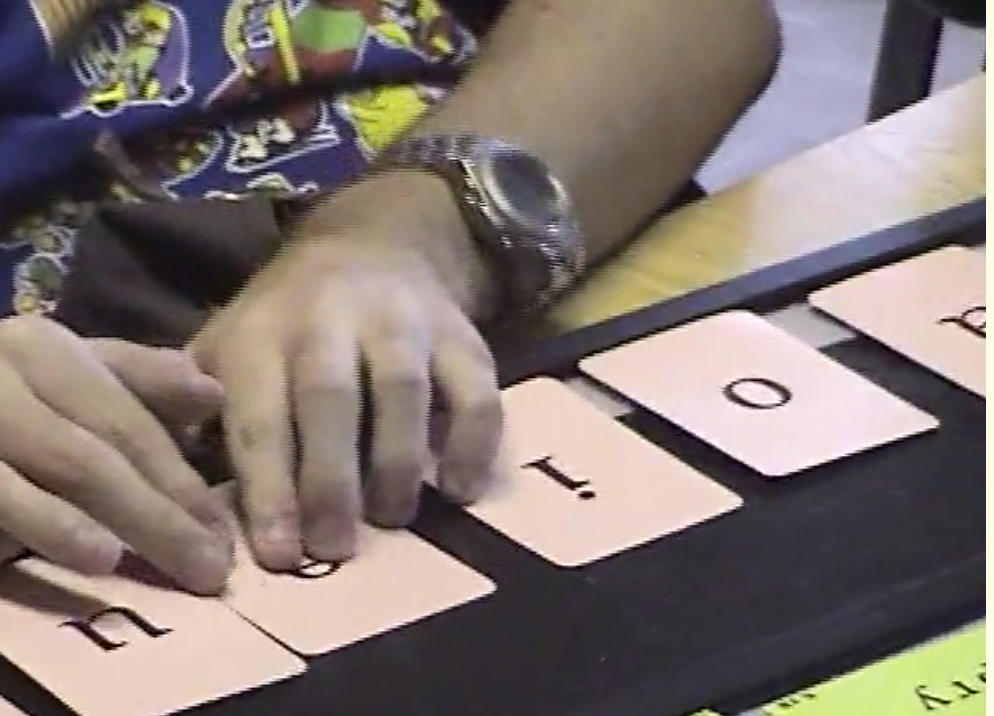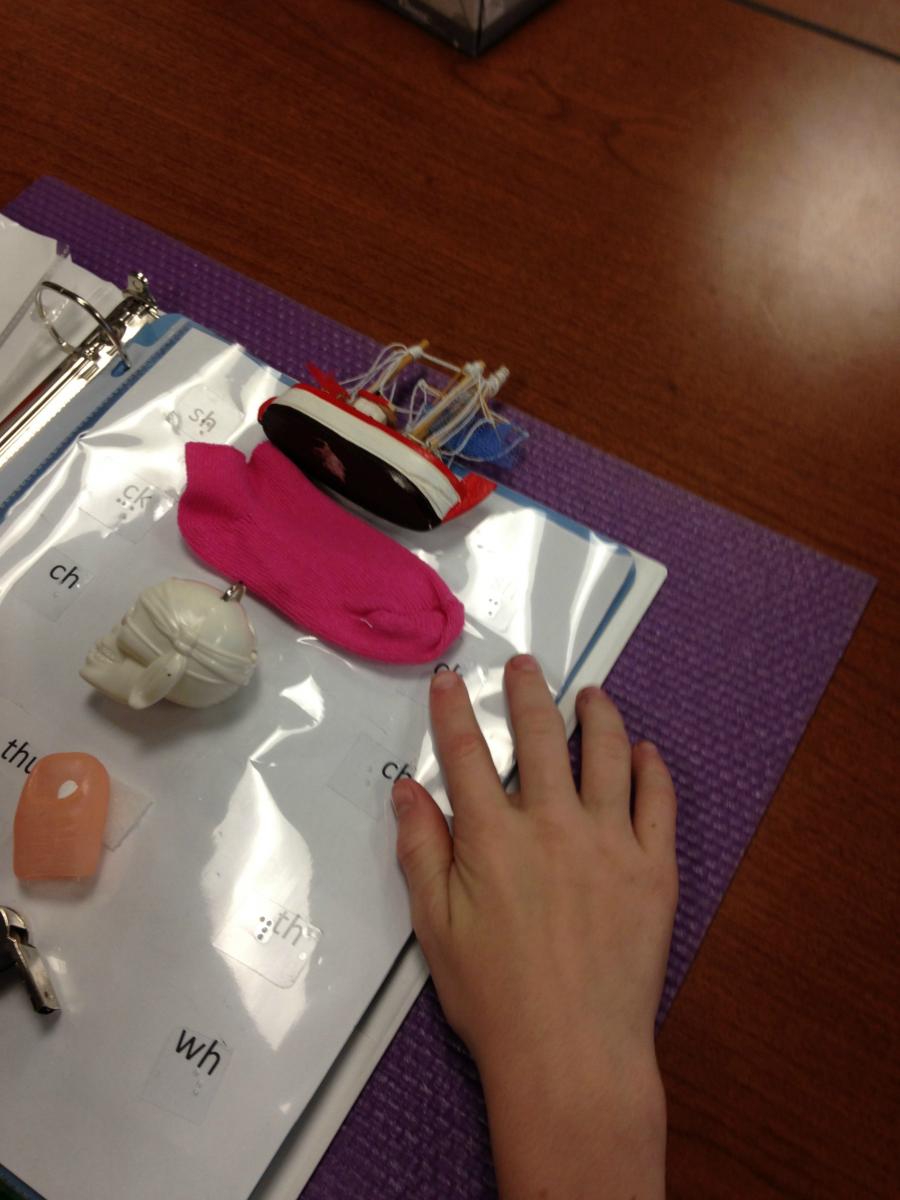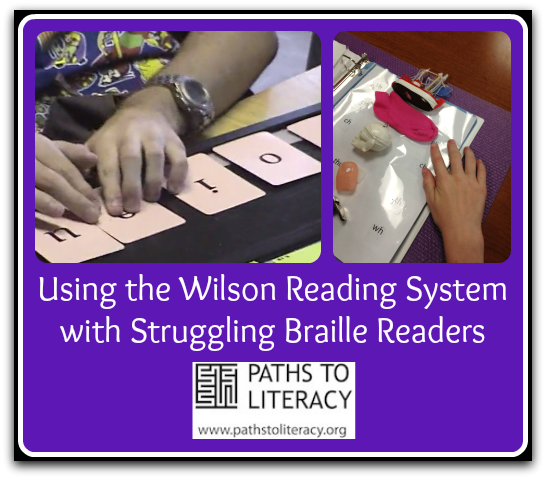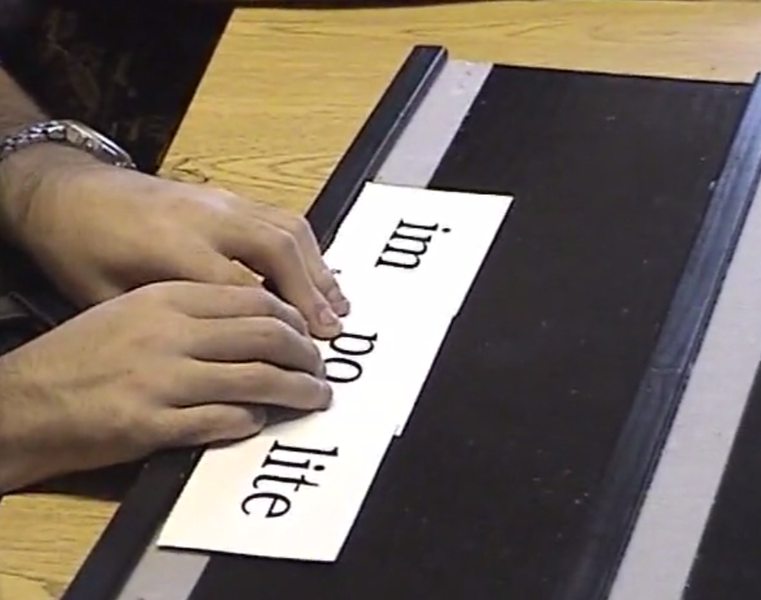Mary McCarthy and Justine Rines are co-authors of this post.
This is the third of three posts on the Wilson Reading System® and Struggling Braille Readers. See also Why We Love Using the Wilson Reading System® with Struggling Braille Readers and Implementing the Wilson Reading System with Braille Students.
The authors of this post are all experienced teachers of students who are blind or visually impaired, and in this post we are presenting two case studies of students who made significant progress once the Wilson Reading System® was introduced.
For more information about the Wilson Reading System® and its use with struggling braille readers, we invite you to view our earlier posts:
Case Study 1
By Roz Rowley
In 2001, I was assigned a student for reading instruction. I was told that he knew most of the braille contractions, but that he could not decode words. He knew many sight words, but any word with more than one syllable was foreign to him. After working with Josh (a pseudonym) for a few weeks, I realized that he needed a structured, multisensory program. That is when I discovered the Wilson Reading System®. A friend who was using it for a child with a learning disability had seen great results. The only problem was that all the materials were in print. I began brailling the sound cards, word cards, and syllable cards. That took hours of my time, but it was worth it. Josh learned about vowels by learning key words.
He began to tap out one-syllable words. Before long, he was able to read whole words, sentences, and short stories. I was able to have the Wilson Student Readers scanned into braille. We had a Wilson trainer come to Perkins, and she presented the introductory workshop. Now, initial training in Wilson is 15 hours.
As I learned more and more, I saw Josh blossoming. Before he came to Perkins, he was told that he would never be a successful reader. As you can imagine, Josh’s self-esteem was low. There were days when he was frustrated and complained. As time passed, Josh began to feel successful and the complaints stopped. Josh had excellent comprehension skills and he worked on learning the consonants, vowels, digraphs, blends, and rules of syllabication. He was decoding three to four multisyllable words.
Josh graduated from Perkins in 2004, and he was the graduation speaker. He read from a braille copy of his speech. What a proud day it was for his parents, teachers, and especially Josh! He is now a college graduate and is employed as an adaptive computer technician. A few years ago, Josh visited Perkins. When he visited my classroom, he made a statement that I will never forget. He said that I had given him the greatest gift, the ability to read, and he would treasure it always. Josh was my guinea pig, and he knew it! He paved the way for my colleagues and me to adapt the Wilson reading materials for the visually impaired.
Case Study 2
By Mary McCarthy
A number of year’s back I started working with Jack, a nine-year-old boy who had been working in a traditional braille reading series, but was not making progress. In my initial testing I found that he could identify most of his letters and braille them on a note-taker. He could state the words the individual letters represented (whole letter contractions; for example, “p” stands for people.) However, when he felt the first letter in the word “pan” he wasn’t sure if he should say the word people, the sound /p/ or the letter “p.”
Jack was a very anxious child with a short attention span. He was easily distracted by external sounds and internal thoughts which seemed to become more pronounced when he was confused. He also had an extreme fear of failure. I realized then I needed to use an approach that focused on blending sounds to decode words and had a limited number of braille contractions. He needed strategies to help with some of his memory issues, auditory processing issues and lots of repetition to reinforce skills. I decided to try the Wilson Reading System®, a program I had used successfully with many of my students who read large print. The program is very interactive and multisensory. It teaches word construction, not just phonics.
I started by taking the three day Wilson overview class again as a refresher. The program matches pictures with letters to help the child remember the correct sound to use. I found small objects to take the place of the keyword pictures (for example: letter a = apple (keyword) = short /a/). He immediately took to matching objects to their sounds and enjoyed learning keywords (see video below). I then found objects that represented all the key words which are paired with the letters, diagraphs and welded sounds introduced in the beginning steps of the Wilson. To keep the information organized I created a notebook that focuses on the first five parts of the ten part lesson plan. The first five parts are:
-
Sound card quick drill
-
Teach/review concepts (manipulate cards to practice reading)
-
Word cards,
-
Word list, in student reader
-
Sentence reading, also in student reader
Reading Notebook

The first page of the notebook has the short vowel sounds, and their key word objects which Jack needed to review prior to each lesson. I would then have him read the letters or welded sounds he needed to work on and repeat the quick drill(for example: letters an = fan (keyword) = welded sound /an/). Second, I would begin to form words using the letter cards. As we moved the cards to make words I would talk about the rules. For example, "When one vowel is followed by a consonant the vowel sound is short." Next, in the notebook I would have pockets, one filled with the sight words or braille contractions he was working on and the other pocket contained words we called "Wilson words" because he could sound them out. This is where I would show him how to sequence and tap out the sounds to decode the words. The last part was sentences. Each week, I would arrange the notebook, choosing letters, sight words, Wilson words and sentences that he was to practice. Given daily repetition, his word recognition and reading fluency increased by the end of the week. Overtime I was able to increase the number of words and sentences he would practice.

I realized that Jack needed to supplement his daily lessons with worksheets to improve his tracking skills and word recognition. I developed worksheets that had simple directions. For example, “Find the word that is different in each row.” When he could do this easily I moved to finding the phrase that was different and eventually the sentence that was different. I also choose ten words from his reader that he would read and copy for homework. The voice output on his electronic note-taker was helpful and he learned to correct his own mistakes. Eventually Jack was able to read the short stories in the Wilson Student Readers. He needed to reread it many times to improve fluency. To demonstrate understanding of the story the Wilson program has the child retell the story in their own words. This was challenging for Jack given his expressive language issues. To assess his comprehension I created multiple choice “wh” worksheets for him to complete after each story.
At the end of the three years of working with Jack he had completed Step Four of the Wilson Reading System®. The process was slow but in the years that followed I learned that he was able to read text at approximately fifth grade level and use his braille in functional activities: keeping notes, reading recipes, shopping lists, etc.
Since working with Jack I have used this notebook and supplemental materials with many of my students who need a more structured approach to reading. I have two colleagues who have also used Wilson and found it successful for some of their students as well. Together we have produced the supplemental materials and a suggestion book to accompany the program. The first three steps have been produced by American Printing House for the Blind along with braille letter magnets, letter cards, word cards and syllable cards which makes this program more teacher friendly.





Comments
Using the Wilson reading system with struggling Braille readers
Wilson Reading Program
Volumes after 3?
Wilson Braille Materials After Step 3